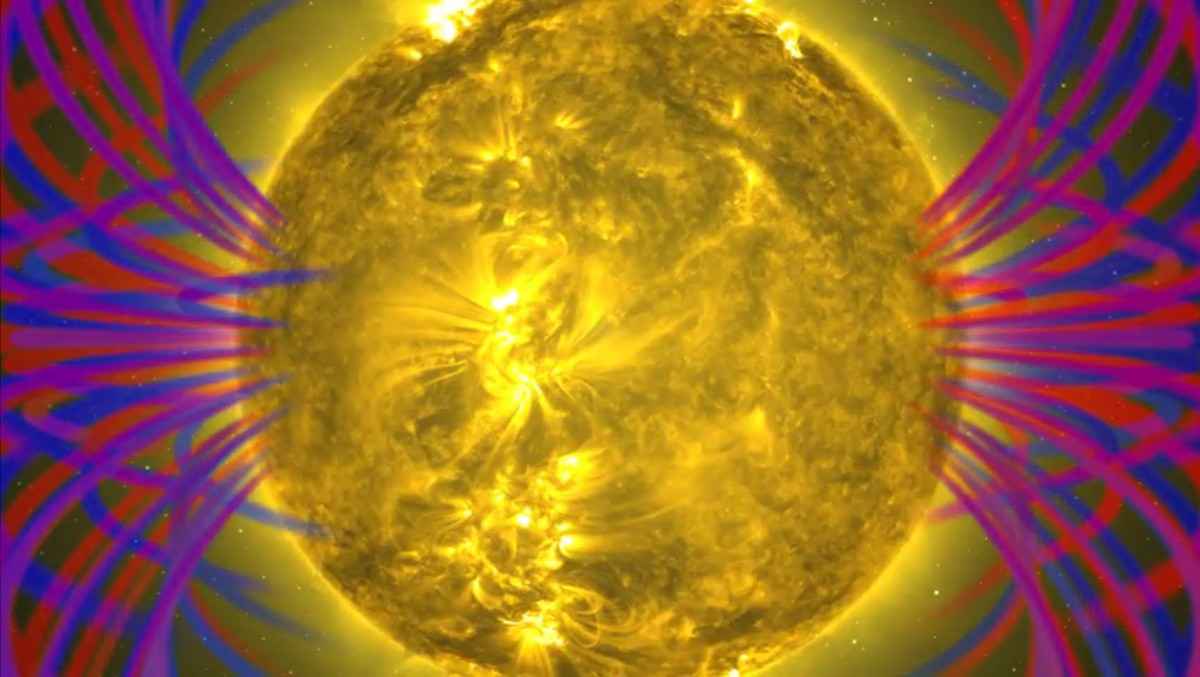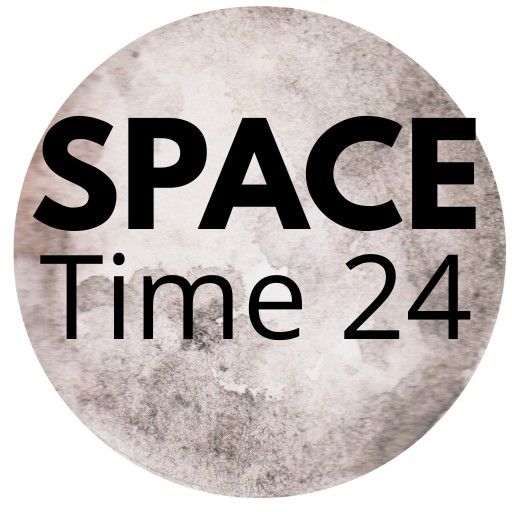NASA and ESA’s Solar Orbiter spacecraft has sent back the first detailed images of the Sun’s polar regions, revealing chaotic magnetic activity as the Sun enters a critical phase of magnetic field reversal.

A New Perspective on the Sun: Solar Orbiter Shows the Hidden Poles
For the first time in history, scientists are getting a direct look at the Sun’s polar regions, long hidden from view. The European Space Agency (ESA) and NASA’s joint mission, Solar Orbiter, has captured high-resolution images of the Sun’s poles—a groundbreaking achievement that offers new insight into the Sun’s magnetic behavior and space weather patterns.
The spacecraft’s newly tilted orbit gave it a unique angle to photograph the Sun’s upper and lower latitudes. These regions play a vital role in shaping the Sun’s magnetic field, which flips polarity roughly every 11 years.
The Sun Is Flipping Its Magnetic Field – and We’re Watching It Happen
The new images show a patchy, splotchy mix of magnetic field activity at the poles—something scientists expected but have never observed in such detail. This chaotic state is a key sign that the Sun is currently undergoing a magnetic field reversal, a process where the north and south magnetic poles of the Sun swap positions.
This reversal is not dangerous to life on Earth, but it drives the most intense solar storms, flares, and coronal mass ejections (CMEs), which can impact satellites, communications, GPS signals, and power grids.
Now, for the first time, a spacecraft will watch the flip happen from the poles, offering scientists an unprecedented chance to understand the mechanism behind this solar phenomenon.
Why This Discovery Is a Big Deal
Solar Orbiter’s polar imaging goes far beyond visual documentation. It opens a new frontier in space weather forecasting, helping scientists:
Track how and when solar eruptions form
Predict future geomagnetic storms that could affect Earth
Model the full solar magnetic field with real polar data
Until now, all solar observations came from an equatorial view—missing the top and bottom of the Sun, where major magnetic changes begin.
With this new vantage point, Solar Orbiter becomes the first spacecraft to watch the full magnetic cycle of the Sun unfold from the poles.
How Solar Orbiter Made It Possible
Solar Orbiter was launched in February 2020 and has been using gravity assists from Venus to gradually tilt its orbit above the Sun’s equator. The most recent maneuver allowed the spacecraft to look directly over the Sun’s northern and southern hemispheres—capturing polar activity in extreme ultraviolet light.
Key instruments used:
Extreme Ultraviolet Imager (EUI): Captured high-resolution images of the magnetic field activity
Polarimetric and Helioseismic Imager (PHI): Measured magnetic fields on the Sun’s surface
This combination of imagery and magnetic data allows scientists to map where eruptions start and how they grow.
The Magnetic Flip: What Happens and Why It Matters
The Sun’s magnetic field reversal happens roughly every 11 years as part of the solar cycle. During this time:
The north and south magnetic poles gradually weaken and reverse
Sunspot activity peaks (solar maximum)
Solar flares and eruptions become more frequent
This chaotic phase, now being closely monitored by Solar Orbiter, can lead to increased auroras on Earth—but also more risk to satellites and astronauts from solar radiation.
The polar regions are the control center of the Sun’s magnetic system. Observing them helps us understand:
When the reversal starts and ends
How the field reorganizes after a flip
Why the intensity of each solar cycle varies
NASA’s Illuminate Series: Shedding Light on the Invisible
The newly released images are part of NASA’s “Illuminate” campaign, a public science initiative that aims to showcase space exploration’s most visual and mysterious discoveries.
According to NASA, these polar images represent a leap forward in solar imaging technology and magnetic field science, with long-term implications for weather prediction, navigation systems, and crewed missions to the Moon a
News source:
https://en.m.wikipedia.org/wiki/Solar_Orbiter
FAQs – Sun’s Magnetic Reversal and Solar Orbiter’s Role
Q1: What is Solar Orbiter’s mission?
A: Solar Orbiter is a European-American mission to study the Sun’s atmosphere, magnetic field, and solar wind. It is the first mission designed to observe the Sun’s poles directly.
Q2: What is happening to the Sun right now?
A: The Sun is in the middle of a magnetic field reversal, a natural process where its magnetic north and south poles swap places. This happens about every 11 years.
Q3: Is this dangerous to Earth?
A: The magnetic flip itself is not harmful. However, it coincides with increased solar activity, which can disrupt Earth’s technologies and create stronger geomagnetic storms.
Q4: Why are the poles important in this process?
A: The Sun’s poles are where magnetic field lines emerge and re-organize during a reversal. Understanding them helps scientists build better models of the entire magnetic cycle.
Q5: What will Solar Orbiter do next?
A: Over the next few years, it will continue to tilt its orbit, getting better views of the poles and helping scientists track the full progress of the ongoing magnetic flip.
You may also like this

2 thoughts on “Solar Orbiter Captures First-Ever Images of the Sun’s Poles, Offering Clues to Magnetic Field Reversal”